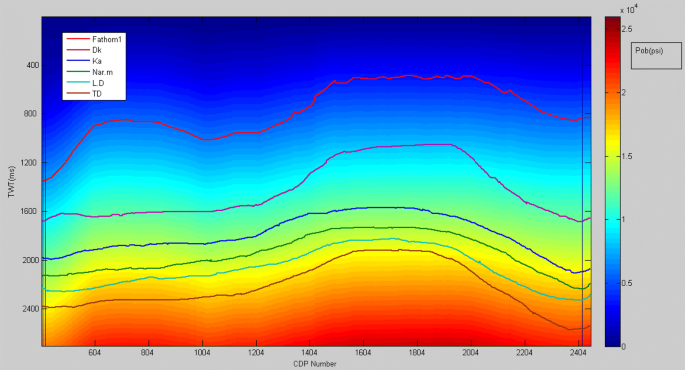

G., 1981, Seismic waves and sources, Springer‐Verlag, Berlin. Finally, the presence of water affects the normal‐bedding velocity, i.e., higher water saturation implies lower velocities. Moreover, anisotropy increases and velocities decrease with increasing pore pressure, i.e., with higher kerogen‐to‐oil conversion. The decrease in wave velocity is 2 km/s for P-waves and 1 km/s for S-waves when kerogen increases from zero to 100%. Both velocities and quality factors decrease with increasing kerogen content at a given pore pressure. The maximum attenuation and stiffness anisotropies are obtained for 18% and 30% volumetric kerogen content, respectively. In particular, for the North Sea Kimmeridge Shale and at maximum anisotropy, P and S parallel velocities are approximately 0.7 km/s higher than the corresponding P and S normal velocities. Computed P- and S-velocities and quality factors parallel to bedding are higher than those normal to bedding, with attenuation anisotropy higher than stiffness anisotropy. Finally, Backus averaging of this mixture with the illite/smectite layers gives the complex stiffnesses of the transversely isotropic and anelastic medium. Then the bulk modulus and density of the kerogen/oil mixture are obtained with the Kuster and Toksöz model, assuming that oil is the inclusion in a kerogen matrix. Assuming that the source rock has a very low permeability, the excess pore pressure can be calculated as a function of the conversion factor. The higher the oil saturation, the higher the maturation level.

The model allows the simulation of different maturation levels induced by pore‐pressure changes caused by the conversion of kerogen to oil. The model generalizes a previous approach based on a pure elastic formulation of Backus averaging and introduces the pressure effect and the presence of fluids (oil and water). The wave velocities and attenuation of petroleum source rocks are obtained as a function of excess pore pressure, initial kerogen content, and water saturation. Petroleum source rock is modeled as a viscoelastic transversely isotropic medium composed of illite/smectite and organic matter.


 0 kommentar(er)
0 kommentar(er)
